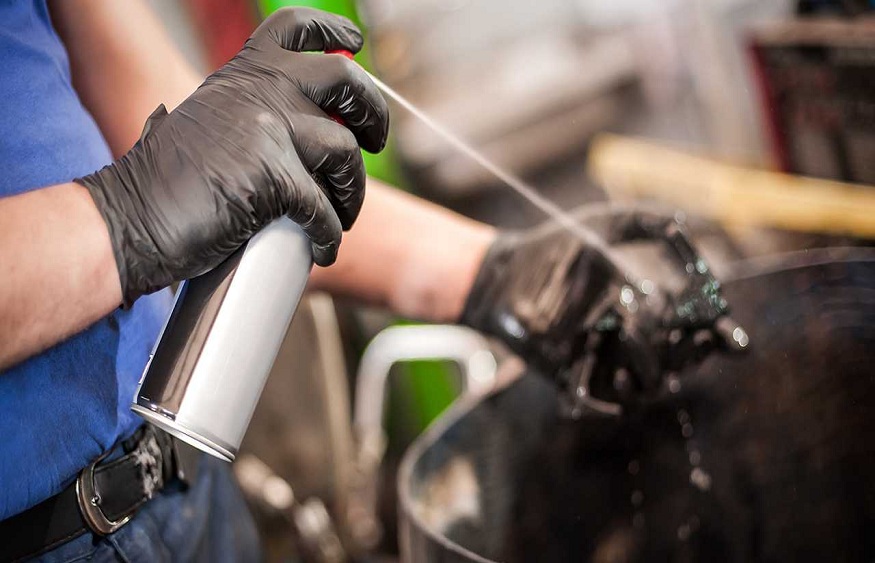
Have you ever had an issue with rust on old tools, car parts, or hardware around the house? If so, then you’re not alone. Rust can wreak havoc on metal surfaces of any kind and cause serious issues when it comes to maintaining expensive equipment and components. Nonetheless, removing rust effectively is essential for preserving its functionality as well as preventing corrosion from taking hold. Fortunately, there’s an easier way: penetrating oil. Penetrating oil has been used for decades by professional technicians to assist in breaking free corroded nuts and bolts, loosening rust spots from machine parts without harming the underlying metal surface – all while offering some other added benefits along the way. In this post we’ll discuss the advantages and disadvantages of using penetrating oil for rust removal projects at home or in a professional work setting.
What is Penetrating Oil and How Does it Work for Rust Removal
When it comes to rust removal, few things work as efficiently as penetrating oil. Not all penetrating oils are created equal, however, and it’s important to know which ones are the best. Essentially, penetrating oil works by seeping deep into the rusted metal, breaking down the rust and allowing it to be easily wiped away. The best penetrating oil will not only dissolve the rust, but also lubricate and protect the metal from future rusting. This means that in addition to getting rid of unsightly rust, you’ll also be prolonging the life of your metal tools and surfaces. So, if you’re dealing with rust, it’s definitely worth investing in the best penetrating oil you can find.
Pros and Cons of Using Penetrating Oil for Rust Removal
Rust is a dreaded enemy of metal objects. It eats away at them gradually, leaving behind unappealing, corroded surfaces. To remove rust, people use various methods, one of which is using penetrating oil. Penetrating oil is made up of thin solvents that seep into rust, making it easier to remove. Among its advantages, penetrating oil is less abrasive than sandpaper or wire brushes and can save equipment from being damaged during cleaning. However, there are also cons to using penetrating oil for rust removal, such as its potential to stain and the fact that it may not work efficiently on large areas of rust. It is essential to understand the pros and cons of using penetrating oil so that you can choose the best removal process for your needs.
Steps to Properly Apply Penetrating Oil to Remove Rust
Rust is a common problem for many people, but with the right steps, you can easily remove it using penetrating oil. The first step is to clean the rusted area with a wire brush or sandpaper. This will help remove any loose rust or debris. Once the area is clean, apply the penetrating oil directly to the rusted area and let it sit for several hours. Afterward, use a cloth or brush to wipe away any excess oil and rust. Repeat the process if necessary, and don’t forget to wear gloves and protective eyewear. With these steps, you can effectively remove rust using a penetrating oil and restore your items to their former luster.
Alternatives to Using Penetrating Oil for Rust Removal
Rust can be a real pain, damaging metal surfaces and causing unsightly stains. While penetrating oil is a common solution for removing rust, there are other alternatives that can be just as effective. One option is using a mixture of lemon juice and baking soda to create a paste. Apply the paste to the rusted area and let it sit for a few hours before scrubbing it off with a brush. Another alternative is using vinegar and salt to create a similar paste. For items that can be submerged, electrolysis can be a highly effective method. Whatever method you choose, don’t let rust linger as it can cause further damage and become more difficult to remove over time.
Safety Precautions When Removing Rust with Penetrating Oil
When it comes to removing rust with penetrating oil, safety should always be a top priority. Rust remover can contain harsh chemicals that can be harmful if they come into contact with your skin or eyes. Therefore, it’s essential to wear protective gear like gloves and safety goggles before starting the rust removal process. Additionally, it’s important to work in a well-ventilated area to avoid harmful fumes. It’s also recommended to read the instructions on the rust remover carefully to ensure proper usage and to avoid any accidents. By taking the necessary safety precautions, you can effectively remove rust without putting yourself in harm’s way.
Tips on How to Maintain Your Metal Items After Removing Rust with Penetrating Oil
Metal items are a great addition to our homes and workplaces, but they are prone to rusting. However, removing rust with penetrating oil is an effective solution that can breathe new life into your metal items. After you successfully remove the rust, it is important to maintain them to prevent future rusting. The first step is to clean them thoroughly with warm soapy water and a soft cloth to get rid of any residue left from the penetrating oil. Secondly, apply a metal protectant to seal the surface and prevent moisture from causing rust to form. Lastly, keep your metal items dry and store them in a well-ventilated area to prevent any dampness that could cause rust to form. With these simple tips, you can ensure that your metal items remain in excellent condition for many years to come.
Penetrating oil is a highly helpful and convenient product for rapidly removing rust and should always be used according to the manufacturer’s instructions. It offers numerous benefits, such as being able to reach deep, hard-to-reach areas or loosen particularly stuck components. It also has its drawbacks, such as potentially damaging certain materials if used incorrectly or left on for long periods of time. No matter what you choose to use for rust removal purposes, it’s important that you use proper safety equipment and handle strong cleaners with care. Additionally, regularly inspecting your metal items for signs of rust accumulation or damage can help you keep them in top shape and prevent future problems. Following these steps will ensure that your metal materials are clean and corrosion-free for years to come.
